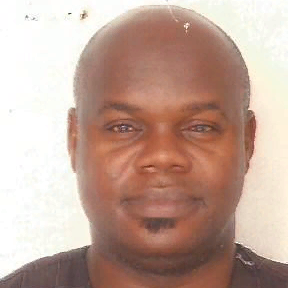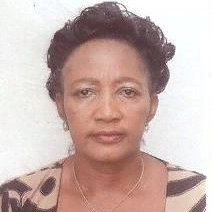International Journal of Education and Management Engineering (IJEME)
IJEME Vol. 5, No. 4, 8 Sep. 2015
Cover page and Table of Contents: PDF (size: 360KB)
GSM Use Pattern for Information Dissemination and Evaluation of Income Level among Rural Dwellers in Uruan Local Government Area, Akwa Ibom State, Nigeria
Full Text (PDF, 360KB), PP.1-12
Views: 0 Downloads: 0
Author(s)
Index Terms
GSM, use pattern, rural dwellers, Nigeria
Abstract
The use of GSM phones in Nigeria started in 2001 after two communication giants MTN Nigeria and Econet (now Airtel Nigeria) were granted licenses by the Federal Government through the Nigerian Communication Commission (NCC). The study examined the GSM use pattern among five rural villages in Uruan Local Government Area of Akwa Ibom State in South - South zone of Nigeria. The study used the descriptive survey design. Researchers constructed questionnaire titled GSM use pattern and evaluation of income level among rural dwellers questionnaire "GUPEILRDQ" was administered on 500 respondents selected through simple random sampling from the five villages. Results indicate that the use of GSM phone among the people of this community is high. The pattern of use was found to decrease with age while men used GSM more than the women. Study also revealed that the use of GSM has positive impacts on the income levels and socio-economic lives of the people. Majority of the people relied on their friends, children, relatives, political and business associates to recharge their phones. Also most of the people were of the opinion that the introduction of GSM in the area is a blessing. A rural telephony project was embarked by the Federal Government of Nigeria but had been abandoned. Two major telephone operators MTN Nigeria and Airtel Nigeria have been embarking on rural telephone projects in the rural areas. The introduction of GSM in Nigeria has had great impact on the lives of the people.
Cite This Paper
Michael E. Okon, Catherine I. Ogbodo,"GSM Use Pattern for Information Dissemination and Evaluation of Income Level among Rural Dwellers in Uruan Local Government Area, Akwa Ibom State, Nigeria", IJEME, vol.5, no.4, pp.1-12, 2015. DOI: 10.5815/ijeme.2015.04.01
Reference
[1]Isiguzo, I.: The Impact of Mobile Services in Nigeria How mobile Technologies are transforming Economic and Social Activities. Pyramid Research. 2010.
[2]Ajayi et al: A century of Telecommunication Development in Nigeria – What next? Retrieved from http://file./f.telecom/Nigeria.htm.p.7.2008.
[3]Ademola O. etal: The Introduction of GSM Services in Anyigba Community and its impact on student's expenditure pattern. Global Journal of Management and Business Research Finance.2013 13(8) 72-81.
[4]Okwuke, E: Nigeria's teledensity hits 81.78% as active line peaks at 114.1m DailyIndependentdailyIndependentnig.com/2013/03/nigerias_teledensityhits81.78activelinepeaksat114.1, 2014 Retrieved26thAug.2014.
[5]Okonji, E. Nigerias Mobile Teledensity predicted to reach 98% in 2013. Retrieved from www.thisdaylive.com/articles/Nigeria_mobile teledensity predicted_ to _reach _98in2015/151394/.2014.
[6]Amkpa, S. A. and Okon, H. I.: Assessment of Students' GMS phone use pattern at the Faculty of Education, University of Uyo. The Information Technologist 2006. 3(1) 36-42.
[7]Odioh, N. Akwa Ibom State on the move: brief history of Local Government. Ministry of Information and Culture. Uyo 1989.
[8]Adebayo, F.: Seven years of telecom revolution- the fun and fury. This is how it all began. Tell magazine of Nigeria 2008.
[9]Ling, R. The mobile connection: The cell phone's impact on society" Morgan Kaufmann, New York.2004
[10]Ajagbe, A.M.et al: The use of Global system Mobile (GSM) among university students in Malaysia. International Journal of Innovation management and Technology2011 2(6)512-513.
[11]Berg, S. Talyor A.S. and Harper, R.: Mobile phones for the next generation: device designs for teenagers. In Proceedings of CHI (Ft. Lauderdale, FL USA). ACM Press Boston, 2003 433-440.
[12]Smith, H., Rogers, R. and Brady, M.: Managing one's social network: Does age make a difference? IFIP Proceedings of Interact (Zurich, Switzerland, Sept. 2003), 551-558.
[13]Colbert, M.: Younger and older adults use of mobile phones for rendezvousing. 2004.
[14]Oketola, D. MTN boosts rural Telephony with 340 base station. The Punch Retrieved from www.punch.ing.com/business/Technology/mtn_boosts_rural_telephony with 340 base stations.2014.
[15]Adepetun, A.: Airtel takes ICT to rural communities. The Guardian Newspapers. Aug. 28. 2014 P. 25.

